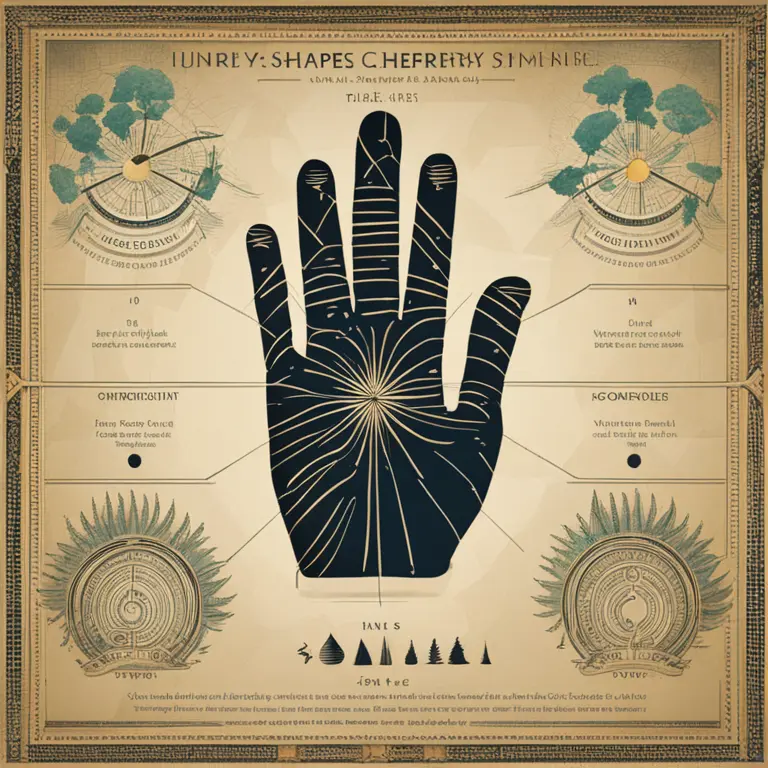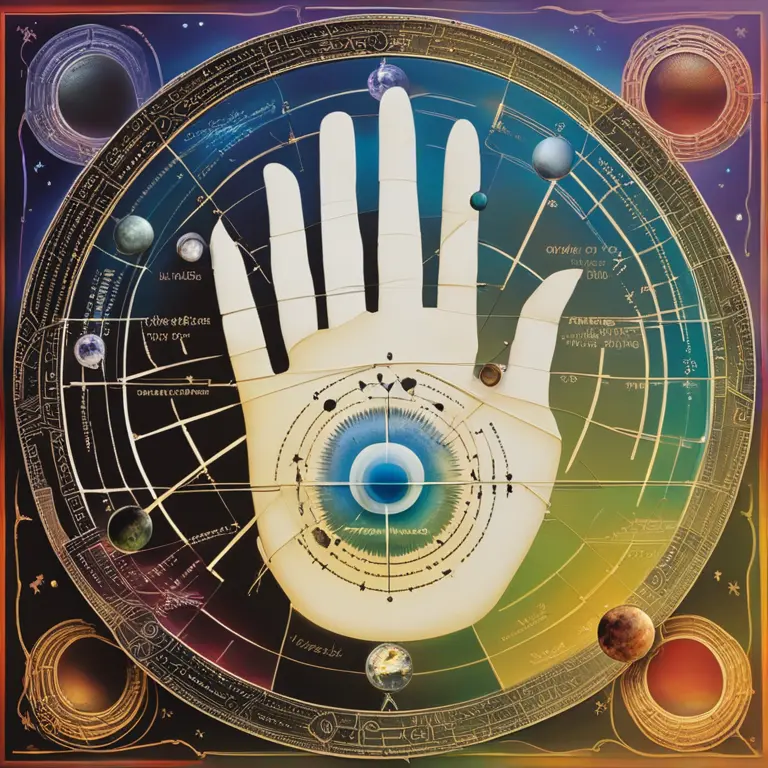
The Essentials of Palmistry: A Guide to Hand Readings
Delve into the art of palmistry, a timeless practice offering insights into personality and destiny through the lines and features of the hand.
article by Nora Pennington
The Foundations of Palmistry
Palmistry, or chiromancy, is the ancient art of analyzing a person's palm to gain insight into their character and future. The practice finds roots in various cultures and has evolved over time. In the modern day, it is a fusion of age-old wisdom and contemporary understanding of human psychology. It draws from astrological principles and acknowledges the connection between celestial and terrestrial occurrences. Professional palmists use this practice to interpret different aspects of an individual's life, such as love, health, career, and talents.

Reading the Lines
The lines on the palm are the most distinctive features for analysis. The three major lines examined are the Life Line, Heart Line, and Head Line. The Life Line represents vitality and the length of life. The Heart Line, running horizontally across the upper palm, relates to emotional matters and love styles. The Head Line, indicative of intellectual tendencies and decision-making approaches, stretches across the palm from edge to edge. Variations in these lines are believed to signify unique traits and potential life events.

Mounts and Their Meanings
Beyond the main lines, palmists observe the mounts – raised areas of the palms corresponding to different planets. Each mount holds insights into specific aspects of one's life, influenced by astrological symbolism. For instance, the Mount of Venus, located at the base of the thumb, relates to love, sensuality, and vitality. In contrast, the Mount of Mercury, near the base of the pinky finger, is associated with communication skills and business acumen. Learning the implications of each mount can be a gateway to deeper self-understanding.

Significance of Hand Shapes and Fingers
Hand shapes and the lengths of fingers offer additional layers of meaning in palmistry. Earth, Water, Air, and Fire—the four elemental hand shapes—each correspond to distinct personality traits, similar to zodiac signs. Finger lengths, spacing, and shapes complement this narrative, hinting at specific characteristics, such as leadership qualities or artistic talents. For example, a long, slender finger of Apollo may suggest a propensity for artistic pursuits and appreciation for beauty.

The Modern Take on Palmistry
Today's palmistry retains its mystical allure while being informed by modern psychological insights. Contemporary palmists approach the practice not as fortune-telling but more as a tool for self-discovery and guidance. Many individuals turn to palm readings for personal growth and understanding, much as they might use therapy or life coaching. As data and technology advance, palmists are also starting to utilize software and apps to detail and document hand features and their interpretations more accurately.
Learning Palmistry
Anyone interested in learning palmistry will find a plethora of books, online courses, and workshops available. Notably, learning this skill requires patient study, practice, and, for the professionally inclined, certification. As aspirants delve into this art, they learn to synthesize line patterns, hand shapes, and symbolic meanings into coherent and insightful readings. It's a continuous learning journey that thrives on intuition, observation, and a genuine connection with the people whose palms are being read.
Published: 2/1/2024
Modified: 2/1/2024
More predictions
Come back here soon to learn more about yourself and your future


The Palmistry Success Line: A Guide to Your Achievements
Discover the insights your hands offer about personal triumphs and professional achievements through the intriguing study of the palmistry success line.


The Palmistry Guide to Your Success Line
Discover the insights your palms hold about your path to success and how palmistry can reveal your potential for prosperity and achievement.


The Palm's Path to Prosperity: Interpreting the Success Line
Uncover the mysteries of the palmistry success line and learn how it may influence your journey towards achieving your goals and aspirations.